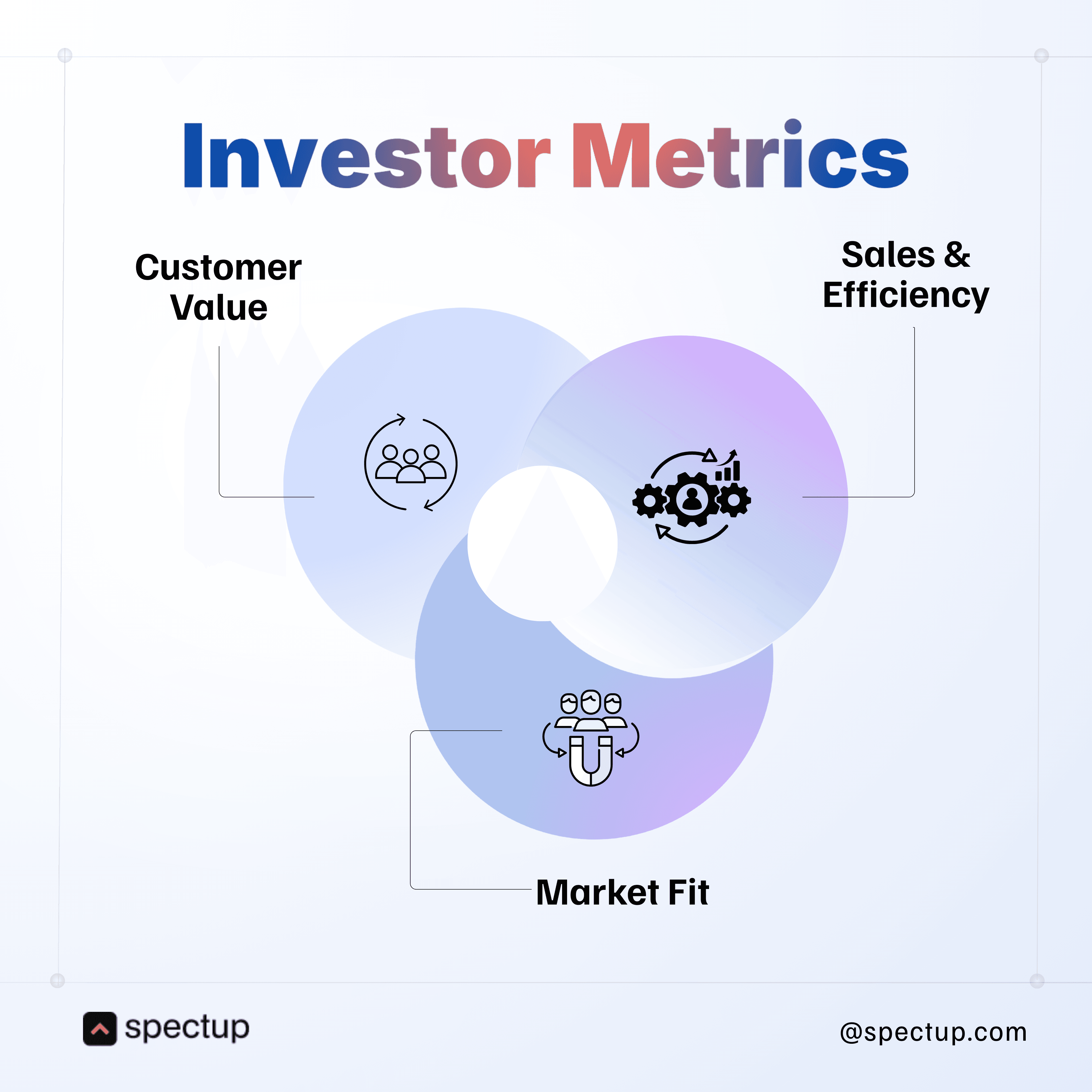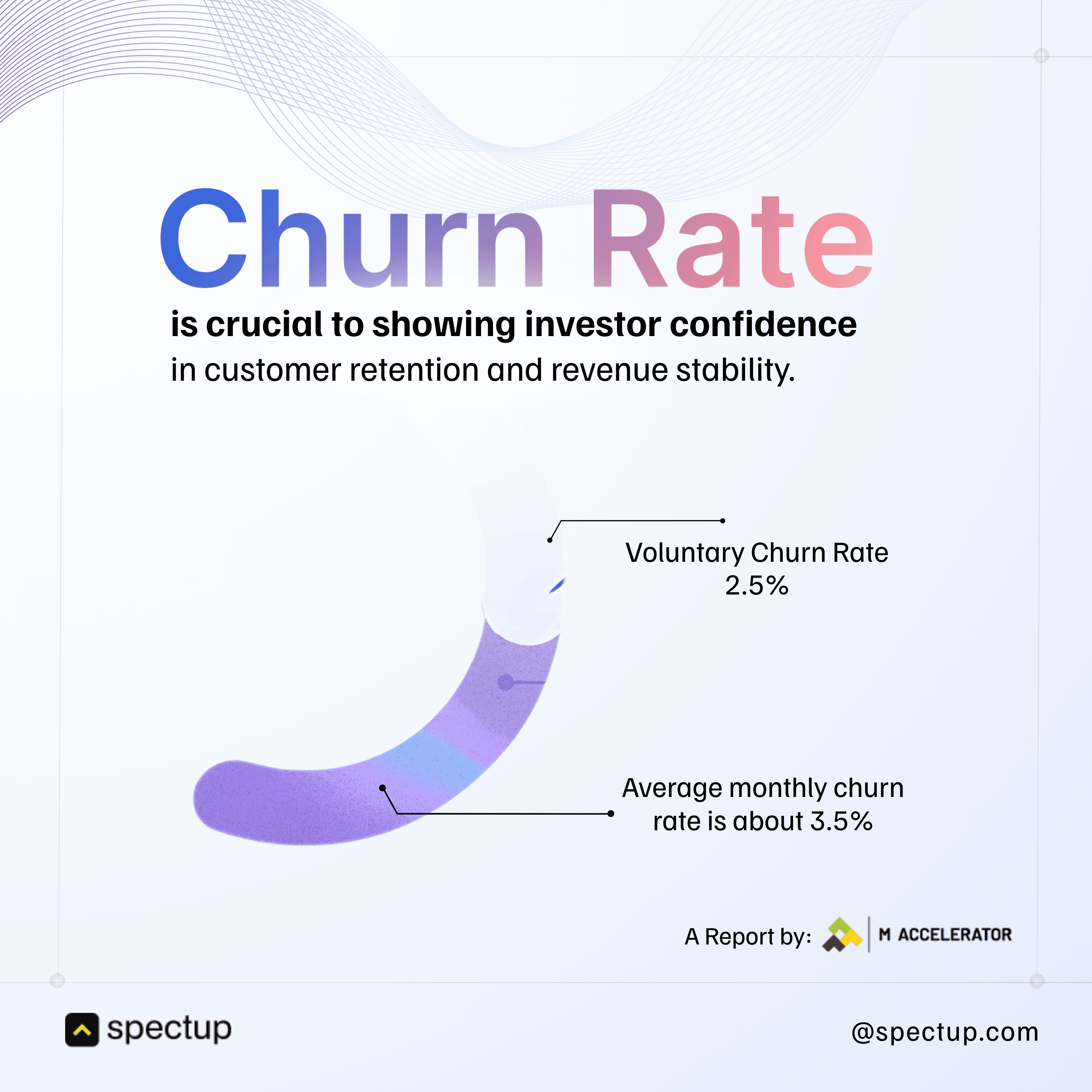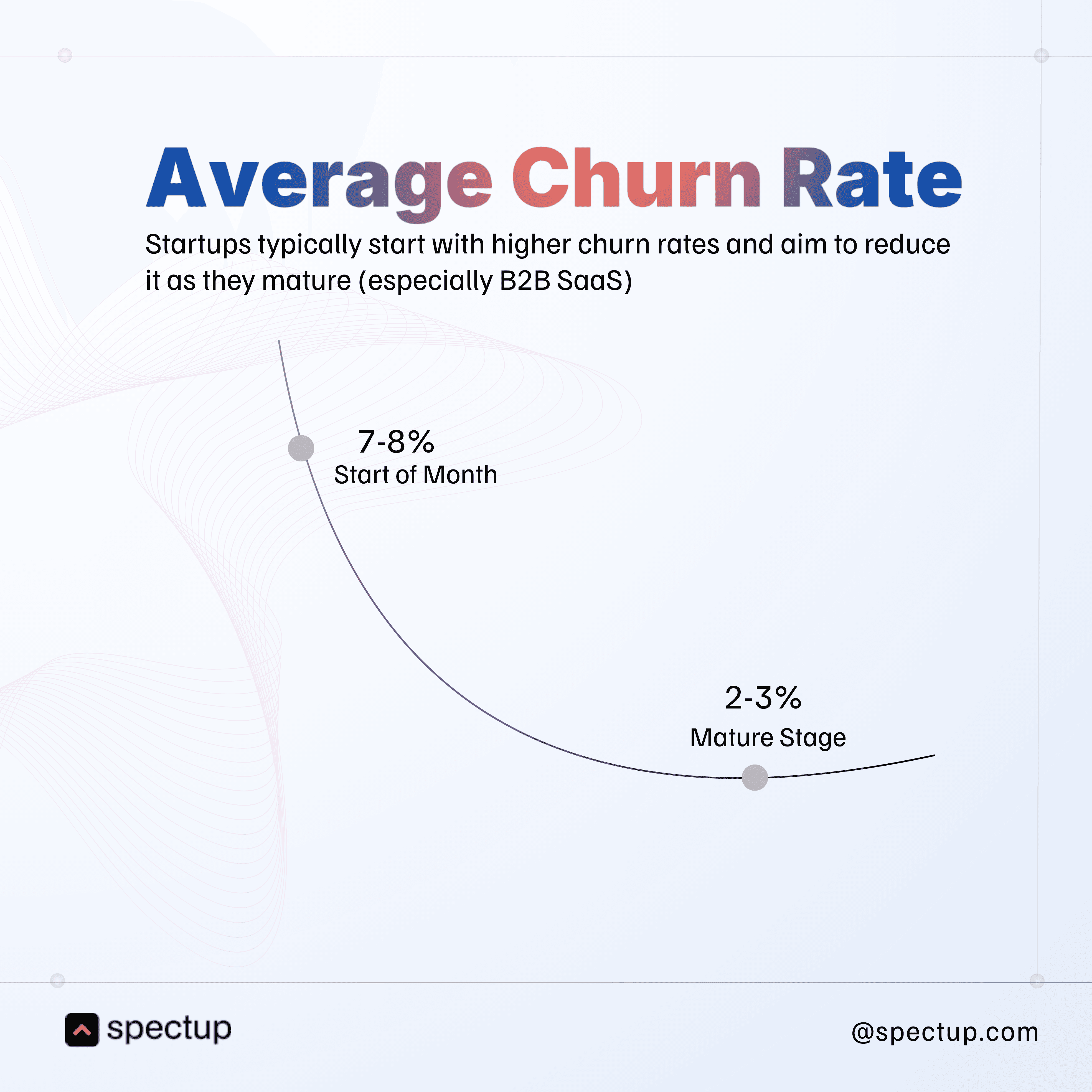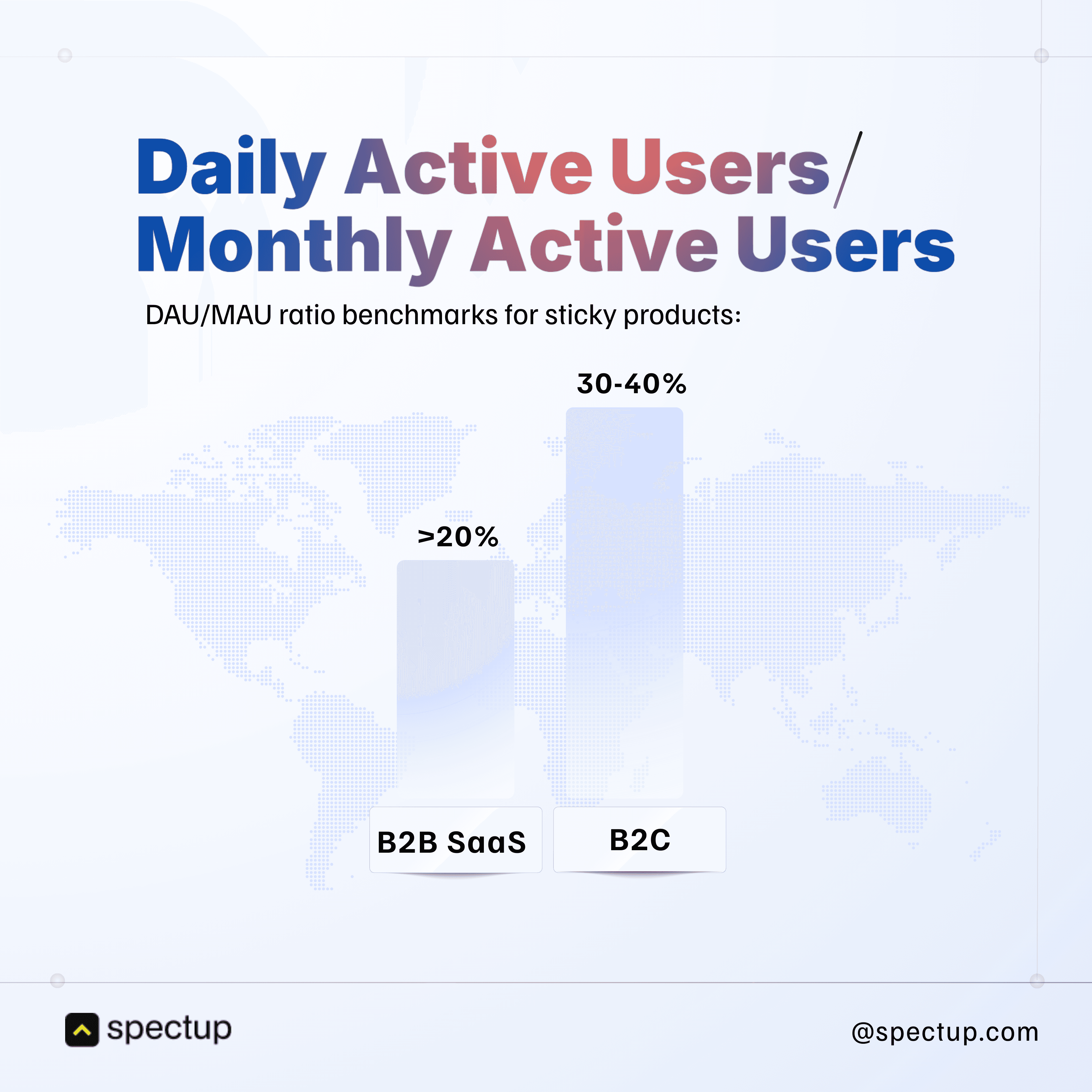While considering Investor Metrics and Startup KPIs, it is common to focus predominantly on revenue, as it often serves as the prominent headline attracting attention. spectup emphasizes that while revenue is a critical indicator of a startup’s ability to generate cash, it represents only one component of a much broader and more complex picture. Major investors do not focus solely on impressive headline numbers; rather, they seek a comprehensive assessment of overall performance. They dive beneath the surface, analyzing metrics that reveal your startup’s scalability, customer loyalty, operational efficiency, and long-term sustainability.
These deeper Metrics for Investors give a richer, more holistic picture of your business’s potential and resilience than raw revenue ever could. Understanding these empowers founders to make smarter decisions and chart a clearer path toward sustainable growth. Further, it has been observed how this broader approach to Investor Evaluation Criteria drives better outcomes for ambitious startups.
Finding the Right Startup KPIs:
No two startups are exactly alike, each operates within a different industry, stage, and market environment. Your strategic goals, customer segments, and even the speed at which you plan to scale will influence which metrics matter most. That’s why choosing the right Key Performance Indicators (KPIs) isn’t about copying what worked for another company; it’s about identifying the data that truly reflects your progress and potential.
Tailoring Metrics to Your Stage:
Startups move through distinct growth phases, each with its own priorities:
Early Stage: Focus on metrics like customer acquisition cost (CAC), user engagement, and product-market fit. These help you understand if your solution is resonating with early adopters.
Growth Stage: Shift attention to monthly recurring revenue (MRR), churn rate, and lifetime value (LTV). Investors want to see traction and signs of repeatable growth.
Expansion or Scale-Up: Emphasize gross margins, unit economics, and operational efficiency. These show how well your business model performs as you scale.
By mapping KPIs to your current objectives, you’re better positioned to allocate resources efficiently, whether it’s doubling down on sales channels or improving product retention.
“What gets measured gets managed.” This classic insight rings especially true for startups seeking clarity in decision-making.
Why a Multi-Metric Approach Matters
By combining several key indicators, investors can:
Uncover underlying trends that raw revenue figures may hide
Assess how efficiently your startup converts investment into growth
Identify potential risks such as over-reliance on a single client or unsustainable marketing spend
When you communicate these metrics clearly and tie them back to your unique growth story, you not only build investor confidence but also empower yourself to steer the business more effectively.
Why Revenue Alone Isn’t Enough for Investors?
When it comes to Investor Metrics and Startup KPIs, revenue often grabs the spotlight. It’s the flashy number everyone talks about; after all, who doesn’t want to see growing sales? But here’s the catch: revenue can be a false positive.
Consider a startup generating substantial sales; however, if those revenues primarily stem from one-time transactions or significant discounts that reduce profit margins, the quality of revenue becomes as important as its volume.
Investors dive deeper than just top-line figures. Their evaluation criteria include:
Scalability: Can your business model grow without costs skyrocketing?
Efficiency: Are you converting resources into revenue effectively?
Long-term profitability: Will your startup sustain profit margins over time?
Beyond these financial dimensions, investors scrutinize the core dimensions that truly shape Metrics:
Customer Value
Retention & Engagement: Churn rates, retention percentages, and active user engagement
Sales & Efficiency: Sales velocity and close rates
Profitability Potential: Gross margin trends
Market Fit: Product-market fit and adoption rates

Additionally, as you consider these factors, think about Building Advisory Teams that can provide guidance through Startup Mentorship. The right advisors can help you navigate the complexities of investor expectations and ensure that you’re not just focusing on revenue but also on sustainable growth.
Revenue is only one piece of a complex puzzle investors solve when deciding where to put their money. Understanding this broader lens can help you focus on what really drives value in investor evaluation and avoid the trap of relying solely on headline numbers.
Customer Lifetime Value (CLTV or LTV)
When investors look into startup KPIs, one metric that catches their eye is Customer Lifetime Value or CLTV. It’s not just about how much money you make today but how valuable each customer will be over time.
CLTV helps investors measure the long-term revenue potential of your customer base, which says a lot about your business’s sustainability. This makes it a crucial factor among various investor metrics. This was experienced directly while working with a startup, where analyzing CLTV revealed untapped growth opportunities and helped shape their fundraising strategy.
What Investors Look For?
High LTV relative to CAC: If it costs you $50 to acquire a customer (Customer Acquisition Cost), but that customer only spends $40 over their lifetime, alarm bells ring. Investors want to see a healthy ratio here; ideally, LTV should be several times higher than CAC.
Increasing LTV: Growth in LTV signals that customers find ongoing value in your product, stick around longer, and spend more, all signs of a solid business. This is especially important when building advisory teams or seeking startup mentorship, as a high LTV indicates a sustainable business model that attracts quality advisors during the recruitment process.
How to Calculate CLTV?
Here’s the simple formula investors expect you to know:
CLTV = (Average Purchase Value) × (Purchase Frequency) × (Customer Lifespan)
Breaking it down:
Average Purchase Value: How much a customer spends each time.
Purchase Frequency: How often they buy.
Customer Lifespan: How long they stay active.
Investors’ Perspective:
CLTV tells the story beyond raw revenue. A startup with consistent repeat customers who spend more over time looks far more promising than one with big sales spikes but no returning buyers.
Practical Examples of CLTV in Action:
Customer Lifetime Value (CLTV) was observed as the key metric while working with a SaaS startup. This is one of the essential investor metrics that can illustrate a company's growth potential. Their app charged $20/month, and on average, users stayed subscribed for 2 years. That meant each customer was worth $480 over their lifetime, a number that suddenly made their growth potential tangible to investors.
On the flip side, we’ve also seen this with e-commerce brands, where a customer might spend $100 per purchase, shop 3 times a year for 5 years, adding up to $1,500 per customer. Understanding CLTV like this doesn’t just help with projections, instead it shapes strategies, fundraising stories, and long-term business decisions.
Both examples highlight how understanding these numbers helps startups attract savvy investors by proving that future revenue streams are strong and reliable. Focusing on critical investor metrics such as Customer Lifetime Value (CLTV) enables businesses to clearly articulate their value proposition and enhance their prospects of securing investment.
Customer Retention and Churn Rates in Investor Metrics:
When investors analyze startup KPIs, they look beyond just impressive revenue figures. Retention and churn rates provide valuable insights into how effectively a business retains its customers, and this information is crucial for understanding key investor metrics.
You can think of retention rate as the percentage of customers who stick around and continue using your product, while churn rate is the number of customers who decide to leave.

Evidence of this can be seen in a previous project involving a startup client, CreatorIQ. By diving deep into their retention and churn data, different patterns were identified that were invisible at first glance. With targeted strategies, these not only improved customer stickiness but also presented a stronger growth story to investors, showing that the team doesn’t just analyze numbers, but also help turn them into actionable insights that drive funding decisions.
What Investors Look For:
Retention Rate: A high retention rate means your product or service keeps customers happy and engaged.
Churn Rate: Lower churn indicates fewer customers leaving, which boosts confidence in future revenue stability.
Net Revenue Retention (NRR): This metric accounts for revenue lost from churn but also gains from upsells or expansions within existing customers. NRR above 100%? That is the evidence compelling investors to consider the startup.
Reducing churn and improving retention isn’t just about luck; it’s strategy in action. Here are some proven tactics:
Building Advisory Teams: Dedicated customer success teams proactively help customers get the most value, reducing frustration and boosting loyalty.
Onboarding Process: A smooth, helpful onboarding experience sets the tone for long-term satisfaction.
Personalization and Engagement: Tailoring interactions based on customer behavior makes users feel seen and valued, increasing their likelihood to stay.

In investor metrics, retention and churn shine as essential indicators of sustainable growth, revealing whether a startup is building lasting relationships or just chasing quick wins. Engaging in effective advisor recruitment can also enhance these efforts by ensuring that experienced mentors guide the process through startup mentorship initiatives.
Customer Acquisition Cost (CAC) for Financial Health of Startups:
When investors examine a startup's financial health, one of the key metrics they closely monitor is Customer Acquisition Cost (CAC).
CAC measures how much it costs your startup to acquire a new customer. It can be understood as the total cost of your marketing and sales efforts divided by the number of customers you actually acquire. This metric is crucial for assessing the viability of your business model and is often discussed in the context of broader investor metrics.
What Investors Look For?
Investors pay attention to the following factors when evaluating CAC:
Low CAC relative to LTV: Investors want to see that acquiring customers isn’t burning through cash faster than those customers bring in revenue. A low CAC compared to Customer Lifetime Value (LTV) signals a sustainable business model.
Efficient use of resources: Spending wisely matters. If you’re blowing your budget on expensive ads or pricey sales teams without results, that raises eyebrows.
Decreasing CAC over time: Showing that you can get better at bringing in customers at a lower cost proves your startup is learning and scaling efficiently. Ideally, you'd want to aim for a CAC that falls within the average range for SaaS businesses, which would further validate your business model and operational efficiency.
How to Lower CAC?
Here are some strategies you can implement to lower your CAC:
Optimize Your Marketing Channel: Focus on the channels delivering the best results for less money, whether that’s social media, SEO, or partnerships.
Automation: Use tools for email campaigns, chatbots, or lead scoring to streamline outreach and reduce manual labor costs.
Improve Conversion Rates: Tweak landing pages, refine messaging, and test calls-to-action to turn more visitors into paying customers without upping spend.
Lowering CAC isn’t just about saving money; it’s about showing investors your startup knows how to grow smartly and sustainably. Additionally, consider how effective startup mentorship and strategic advisor recruitment can enhance your marketing efforts and optimize resource allocation. Building advisory teams with experienced professionals can provide valuable insights that drive down acquisition costs while ensuring that you maintain quality leads.
Sales Efficiency (Sales Velocity and Close Rate):
When investors analyze startup KPIs, sales efficiency emerges as a vital metric. The focus extends beyond the quantity of deals pursued to encompass the speed and profitability with which they are successfully closed.
Two critical figures in this context are Sales Velocity and Close Rate, both potent indicators in the investor evaluation criteria toolkit.
Sales Velocity
Consider sales velocity as the speedometer for your revenue engine. It gauges how swiftly money circulates through your sales pipeline using this formula:
Sales Velocity = (Number of Opportunities) × (Average Deal Size) × (Win Rate) ÷ (Sales Cycle Length)
Each element of the formula conveys a message:
Number of Opportunities: How many potential deals are currently in the pipeline?
Average Deal Size: What’s the typical value associated with each deal?
Win Rate: What percentage of opportunities actually result in a closure?
Sales Cycle Length: How much time does it take on average to close a deal?
Investors are particularly attracted to startups boasting high sales velocity as it signifies efficient resource utilization and accelerated revenue growth. A brief sales cycle coupled with a commendable win rate indicates that you’re effectively targeting the market.
Close Rate
Close rate is straightforward yet equally significant: it represents the percentage of leads that successfully convert into paying customers.
What investors seek in close rates:
Consistently high or improving close rates suggest robust sales execution.
A growing close rate implies better product-market fit or enhanced sales strategies.
Low close rates may indicate issues with lead quality or deficiencies in the sales process itself.
Monitoring these metrics enables you to showcase to investors that your startup isn’t solely focused on generating leads but also excelling at converting them, a positive sign in any investor's guidebook.
Gross Margin
When evaluating Investor Metrics and Startup KPIs, investors consider gross margin a critical indicator of a startup’s financial health. It reflects not only the revenue generated but also the profitability retained after accounting for the direct costs associated with producing the product or service. High gross margins signal that your business model is efficient and scalable, which is music to any investor's ears.
What Investors Look For
High Gross Margin: A strong margin suggests your startup can cover operating expenses and still turn a profit.
Margin Improvement Over Time: Investors want to see growing efficiency, are you optimizing costs as you scale?
How to Improve Gross Margin?
Taking control of your gross margin means focusing on smart strategies:
Optimize Production: Streamline manufacturing or service delivery to lower direct costs without sacrificing quality.
Increase Pricing: Evaluate if your product or service pricing reflects its value, sometimes, raising prices slightly can boost margins significantly.
Offer Premium Products: Introducing higher-end offerings can attract customers willing to pay more, improving overall profitability.
Imagine a SaaS startup that initially offers one pricing tier with modest margins. By adding premium features at a higher price point, they not only increase revenue but also lift their gross margin, making the business more attractive in the eyes of investors.
Understanding these nuances beyond just revenue figures helps you speak the language investors use when sizing up your startup’s true potential.
The Role of Engagement Metrics in Investor Evaluation
Moreover, while working with hundreds of startups, it has been observed that investors don’t just want to see a startup’s revenue grow, instead they want to know how customers are interacting with the product or service. Engagement metrics provide a window into this behavior, revealing whether users find real value or if the growth is superficial. These Investor Metrics are crucial for spotting startups that aren’t just growing but building sustainable, loyal user bases.
Here are some key Startup KPIs investors closely watch:
Active Users: This shows how many people regularly use the product. Daily Active Users (DAU) and Monthly Active Users (MAU) indicate consistent user interest rather than one-time visits.
Engagement Rate: Tracks how deeply users interact, think session length, frequency of logins, or actions taken inside an app. High engagement often signals strong product-market fit.
Feature Usage: Which features grab attention? Investors look for evidence that users rely on core functionalities instead of ignoring them. This can hint at where to focus development or marketing efforts.

Imagine two startups with similar revenues: one has a high engagement rate and steady active users; the other sees lots of signups but minimal interaction. Investors would likely favor the first because engaged users tend to stick around longer and generate more value over time.
Understanding these metrics helps you tune your startup’s story for investors by showing not just what you do, but how well it resonates with your audience.
The Importance of Market Fit and Product Adoption in Investor Metrics:
You might wonder why investors get so hung up on market fit and product adoption when they already see your revenue numbers. It’s simple: these metrics reveal how well your product really resonates with your target audience, which says a lot about future growth potential.
Product-Market Fit (PMF) is the holy grail in investor metrics. It means your product solves a real problem for enough people who are willing to pay for it. Without PMF, even a flashy sales spike can be just a one-time fluke. Investors look for signs that customers love your product so much they stick around and tell their friends.
Product-Market Fit Indicators:
D30 retention rates of around 60% or higher are considered "iconic" and a strong indicator of product-market fit.
Daily active usage consistency of 60-70% of users showing up 5+ days a week is a hard-to-game metric signaling genuine market fit.
Product Adoption Rate measures how quickly new users start actively using your product after signing up. A high adoption rate signals strong initial interest and usability, a green flag for scalability.
Product Adoption Rates:
As per the research by Ergomania, following production adoption rates are the benchmarks:
Industry benchmark activation rates range between 40%-60%.
Time to value (TTV) aimed to be within 5 minutes for new users.
Feature adoption rates targeted at 60%-80% for key features.
Product stickiness defined by DAU/MAU ratios >20% for B2B SaaS and 30%-40% for B2C.
How can you boost these critical startup KPIs? Try these tactics:
Conduct customer feedback loops: Regularly ask users what works, what doesn’t, and what they want next.
Leverage data analytics: Track user behavior to spot friction points or features that delight.
Iterate quickly: Use feedback and data insights to improve your product in rapid cycles.
These steps help you align your offering with real market needs, turning early adopters into loyal customers, exactly what investor evaluation criteria demand for long-term success.
The importance of market fit and product adoption in investor metrics is reflected through several key ratios and statistics that investors use to evaluate the traction and potential success of a product in the market.
To capitalize on these critical insights, startups should continuously monitor and optimize their product-market fit and adoption metrics, ensuring alignment with customer needs and market demands. Proactively leveraging this data not only strengthens your strategic position but also significantly enhances your appeal to discerning investors seeking sustainable growth opportunities.
Conclusion: Metrics That Tell the Full Story
Revenue grabs headlines, but savvy investors dig deeper. Understanding Investor Metrics means looking beyond just the top-line number. Startups that master a range of Startup KPIs position themselves for stronger investor confidence and better fundraising success.
Investors use above mentioned evaluation criterias to separate fleeting hype from genuine opportunity. Given the current scenario of Investment opportunities at spectup, such outcomes were observed while working with startups embracing this multidimensional approach, stand out in pitch rooms and win deals.
It is important to evaluate whether your data fully represents the complete business performance. If gaps exist, expanding the scope of your key metrics is essential for supporting the sustainable growth and future success of your startup. For further assistance, please contact spectup to connect with appropriate investors and refine strategic approaches.
Niclas Schlopsna
Partner
Ex-banker, drove scale at N26, launched new ventures at Deloitte, and built from scratch across three startup ecosystems.








